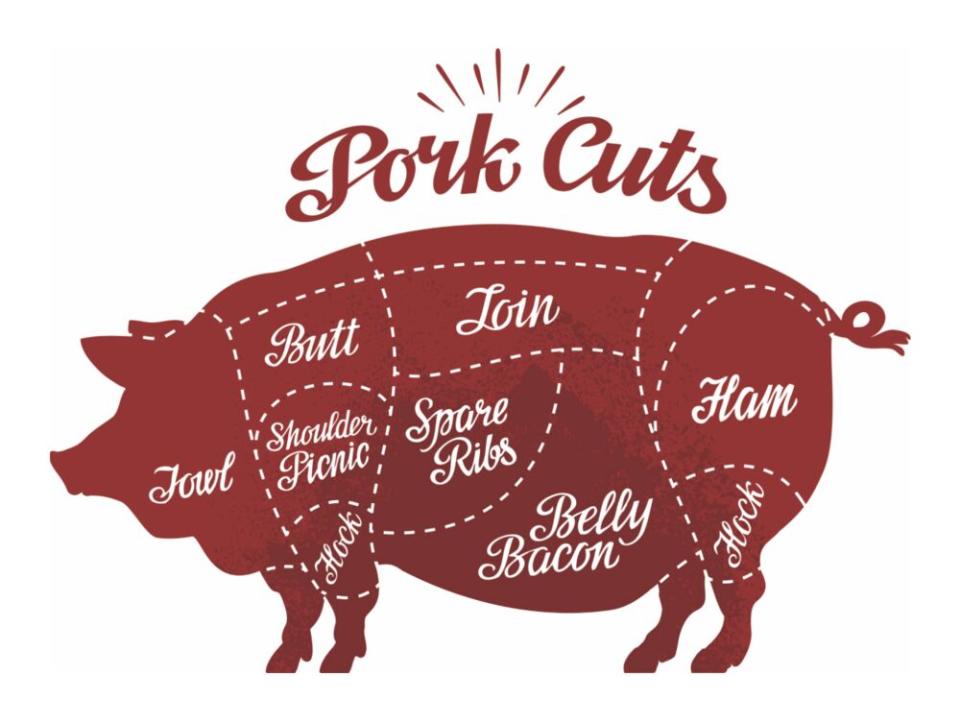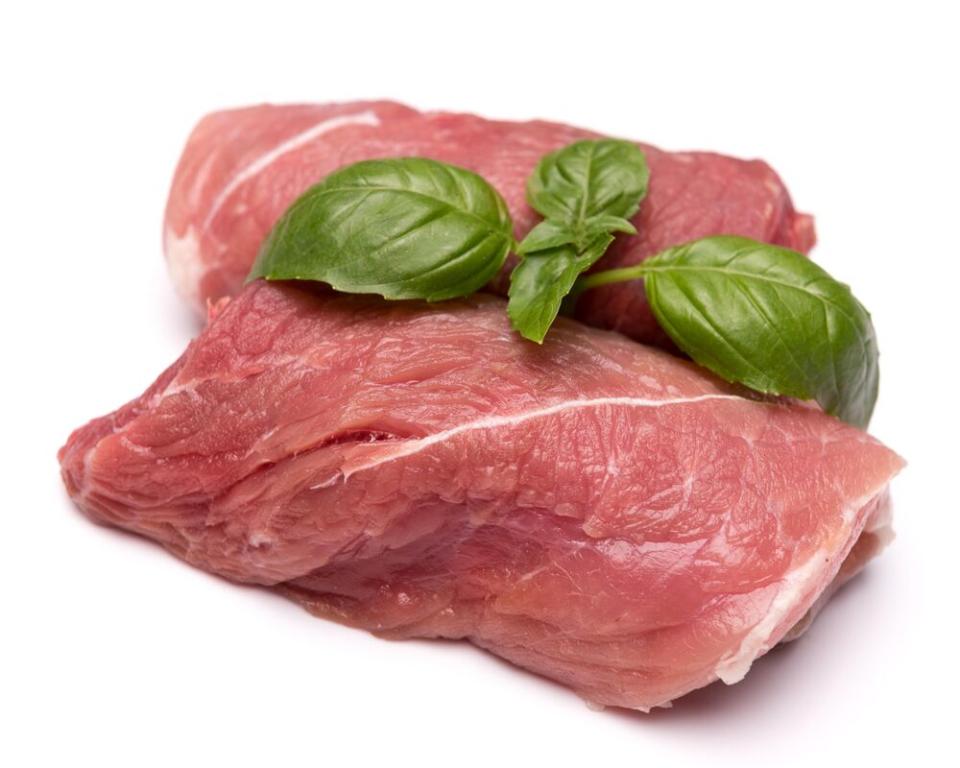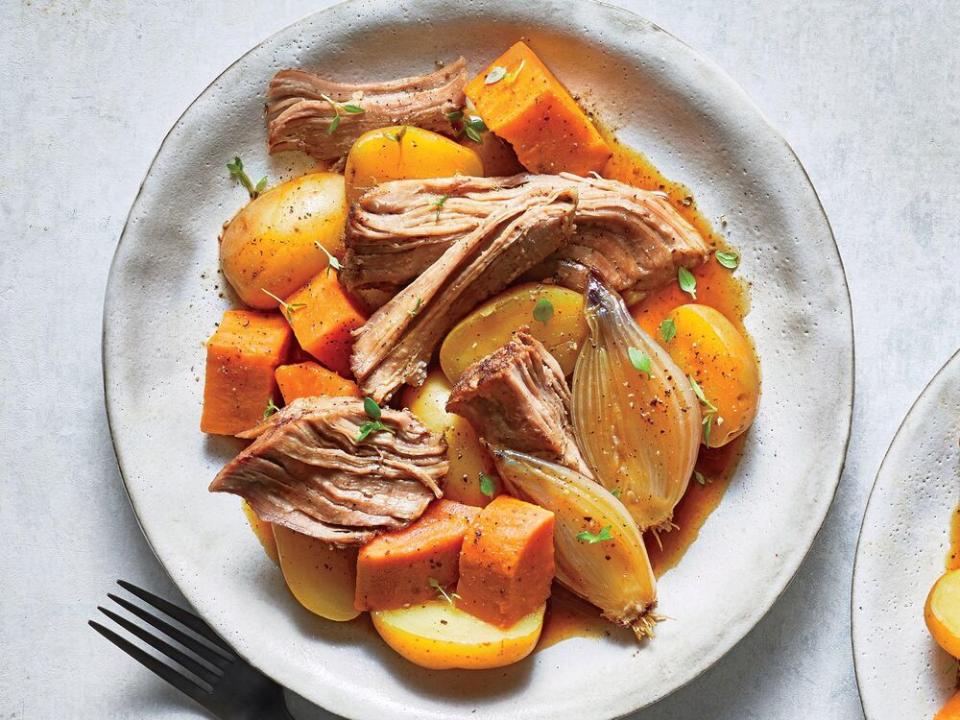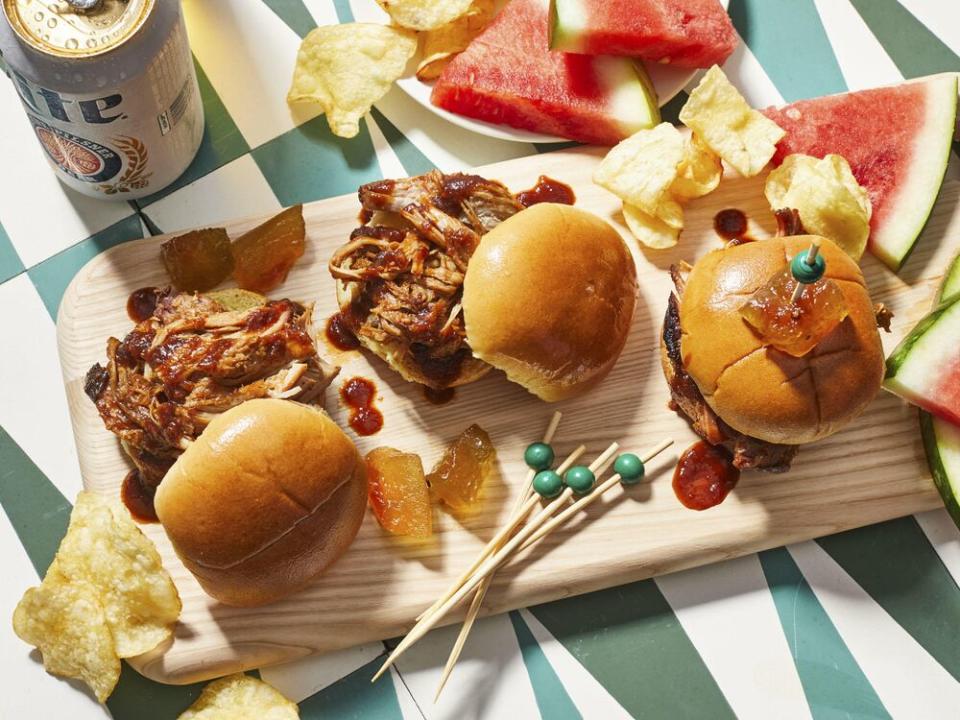What Is Pork Butt and What Does It Taste Like?
You know how sometimes you just crave a big, juicy, meaty butt? Get your heads out of the gutter—we’re talking about pork.
Here’s everything you need to know about the cut of meat with a very misleading name:
What Is Pork Butt?

Pork butt, sometimes called Boston butt, comes from the upper part of a pig’s shoulder.
Since it consists of parts of the neck, shoulder blade, and arm, there’s a lot of connective tissue and fat. Slow cooking takes the cut of meat from tough and fatty to tender and juicy. This is why it’s the cut most commonly used to make pulled pork for barbecue.
So what do you call a pig’s actual butt (upper hind legs)? Ham.
Pork Shoulder vs. Pork Butt

Pork butt and pork shoulder are often confused with one another, and it’s easy to see why: They both come from the same general area on a pig.
The butt, however, is higher on the leg. The shoulder is a bit further down.
Since the skin is usually sold on the shoulder (and not on the butt), it’s best to use a shoulder if your recipe would benefit from crispy pork skin.
If you’re looking for the best cut for stewing and braising, though, go with the butt—there’s more fat throughout, which makes for deliciously tender pulled pork.
Related: A Beginner’s Guide to Barbecuing
What Does Pork Butt Taste Like?

The high fat content makes pork butts more flavorful than other cuts of pork. The rich, meatiness is intensified through cooking. The low, slow heat melts the fat and draws out the juices.
Get the recipe: Pork Butt Dry Rub
Pork Butt History and Name

Though pork butt is often called Boston butt, the cut of pork is a staple in Southern cuisine. So what’s the deal with the name?
There are two possible explanations:
The most popular story has to do with how the pork was shipped. Before the Revolutionary War, New England butchers packed them into barrels called “butts” to be stored and transported. After a while, the upper shoulder became known as a New England speciality—that’s why people started calling it the “Boston butt.”
Southern Living, however, refutes this legend.
“For starters, Virginia and North Carolina, not New England, were the centers of the pork trade in the 18th century, until they were eclipsed by Cincinnati in the 1830s and then by Chicago,” Robert Moss wrote for the magazine. “I have searched high and low but have been unable to find a single printed use of the term ‘Boston butt’ in the colonial era or even before the Civil War. (Also, Thomas Jefferson did not call John Adams a ‘Boston butt’ during an 1800 presidential debate, contrary to a popular legend I am trying to start.)”
The real story, according to Moss, “butt” was just a generic term for the large, thick end of something (like the butt of a gun).
How to Cook Pork Butt
Three words: Cook it slowly.
Pork butts are best when they’re barbecued, braised, or stewed—basically anything that’ll get them over low, slow heat.
Since they’re incredibly flavorful, they can stand up to sauces and sides with equally strong flavors. That’s why they’re most commonly paired with sweet, tangy barbecue sauce.
Pork Butt Recipes

Now that you’re armed with all the pork butt knowledge you could ever need, it’s time to get cooking. Here are some of our favorite recipes that make good use of the cut of meat:

